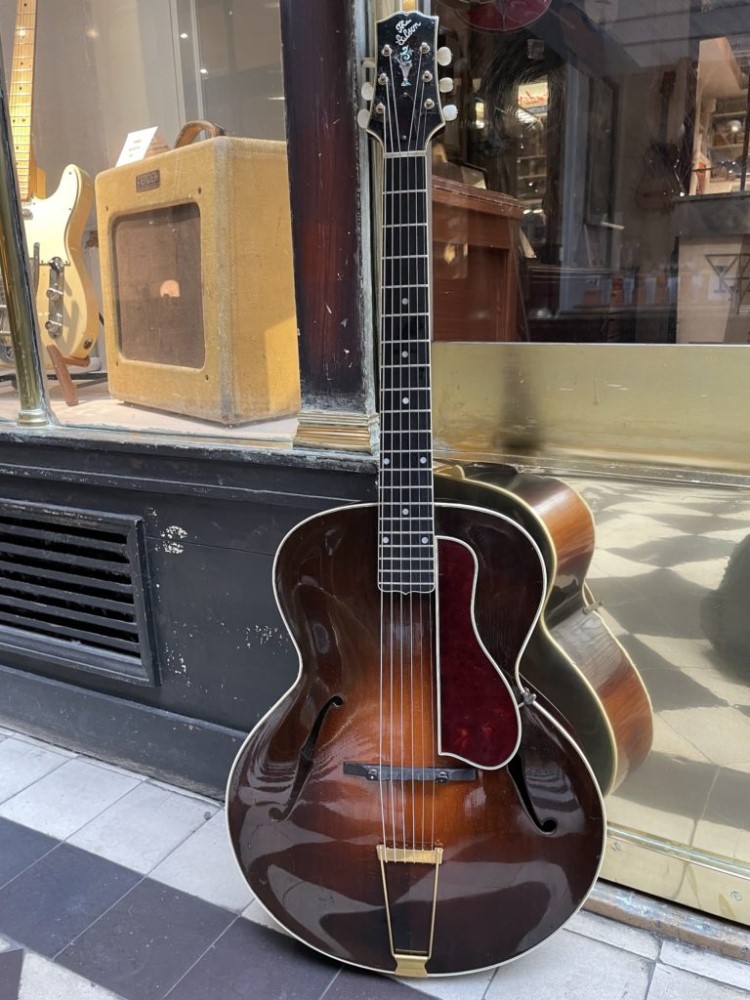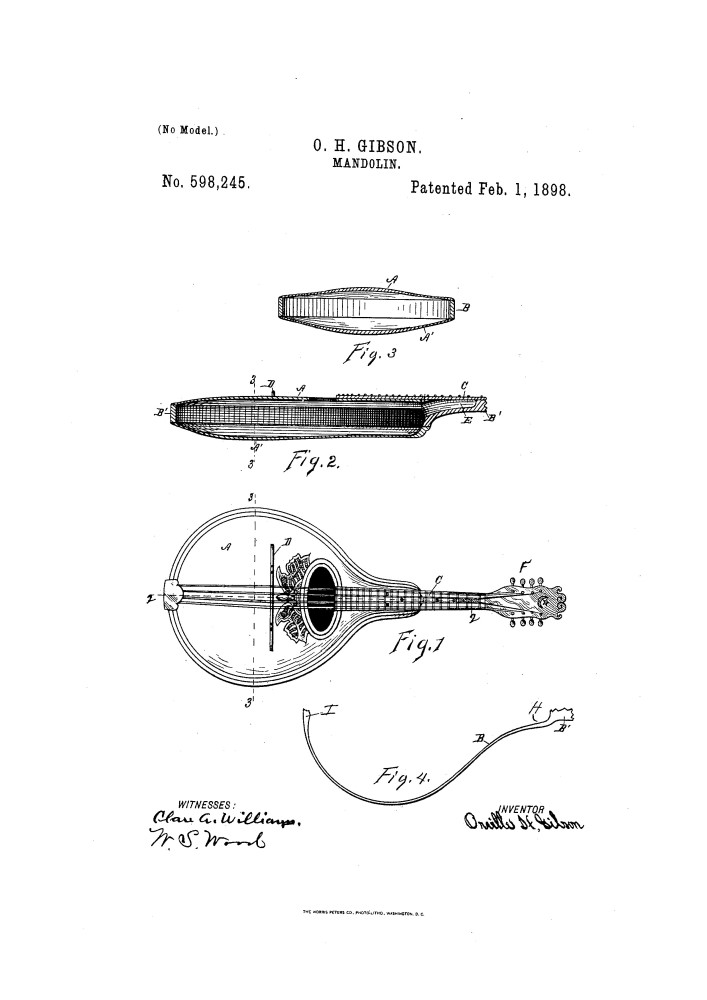The Archtop story
The
Archtop guitar, considered by many only as the Jazz guitar par
excellence, is in fact remarkable for almost any style of playing.
It was the Gibson guitar corporation that brought the first guitar of its kind to market in 1923. It was the legendary L-5 model, much sought-after today.
It was the first guitar with f-holes, similar to string quartet instruments such as the cello. Musician and sound engineer Lloyd Loar, recruited by Gibson at the end of the First World War, designed and developed this guitar, which measures 16 inches (40.6cm) at the hips.
He had adopted Orville Gibson's innovative mandolin design (patented in 1898), with its convex, sculpted back and soundboard.
He adapted this concept (itself already inspired by the violin), adding f-holes, a trussroad, a neck joint at the 14th fret and a floating bridge (at the time, the bridge was glued to the soundboard).
In 1934, its hip width was increased to 17 inches (43.1cm).
This type of design was intended to improve power and tone. This was confirmed by guitarists in orchestral bands of the time, who adopted it en masse as it enabled them to be heard amongst brass, drums and double bass.
In 1931, also wanting a share of Gibson's success, Epiphone in turn launched an Archtop model based on the same design, the Masterbilt, which was more luxurious and a little larger, with hips at 16 3/8 inches (41.6cm).

Gibson L5 de 1927
It was the Gibson guitar corporation that brought the first guitar of its kind to market in 1923. It was the legendary L-5 model, much sought-after today.
It was the first guitar with f-holes, similar to string quartet instruments such as the cello. Musician and sound engineer Lloyd Loar, recruited by Gibson at the end of the First World War, designed and developed this guitar, which measures 16 inches (40.6cm) at the hips.
He had adopted Orville Gibson's innovative mandolin design (patented in 1898), with its convex, sculpted back and soundboard.
He adapted this concept (itself already inspired by the violin), adding f-holes, a trussroad, a neck joint at the 14th fret and a floating bridge (at the time, the bridge was glued to the soundboard).
In 1934, its hip width was increased to 17 inches (43.1cm).
This type of design was intended to improve power and tone. This was confirmed by guitarists in orchestral bands of the time, who adopted it en masse as it enabled them to be heard amongst brass, drums and double bass.
In 1931, also wanting a share of Gibson's success, Epiphone in turn launched an Archtop model based on the same design, the Masterbilt, which was more luxurious and a little larger, with hips at 16 3/8 inches (41.6cm).

Gibson L5 de 1927

